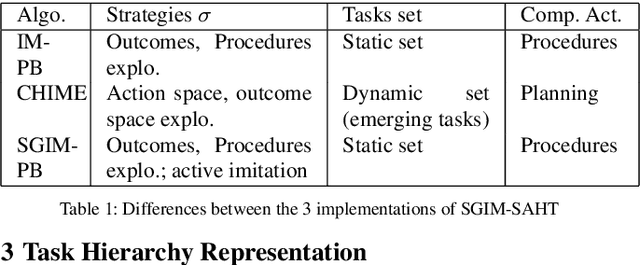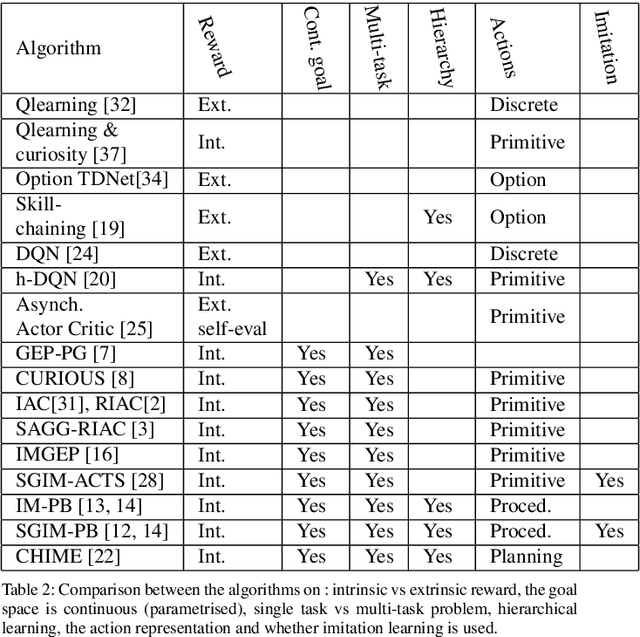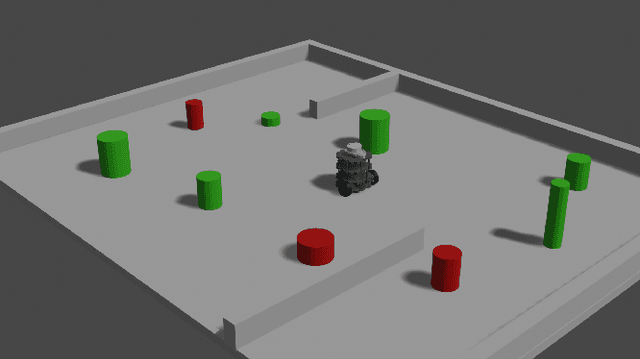Alexandre Manoury
IMT Atlantique - INFO, Lab-STICC_RAMBO
Robots Learn Increasingly Complex Tasks with Intrinsic Motivation and Automatic Curriculum Learning
Feb 11, 2022



Abstract:Multi-task learning by robots poses the challenge of the domain knowledge: complexity of tasks, complexity of the actions required, relationship between tasks for transfer learning. We demonstrate that this domain knowledge can be learned to address the challenges in life-long learning. Specifically, the hierarchy between tasks of various complexities is key to infer a curriculum from simple to composite tasks. We propose a framework for robots to learn sequences of actions of unbounded complexity in order to achieve multiple control tasks of various complexity. Our hierarchical reinforcement learning framework, named SGIM-SAHT, offers a new direction of research, and tries to unify partial implementations on robot arms and mobile robots. We outline our contributions to enable robots to map multiple control tasks to sequences of actions: representations of task dependencies, an intrinsically motivated exploration to learn task hierarchies, and active imitation learning. While learning the hierarchy of tasks, it infers its curriculum by deciding which tasks to explore first, how to transfer knowledge, and when, how and whom to imitate.
Hierarchical Affordance Discovery using Intrinsic Motivation
Sep 23, 2020



Abstract:To be capable of lifelong learning in a real-life environment, robots have to tackle multiple challenges. Being able to relate physical properties they may observe in their environment to possible interactions they may have is one of them. This skill, named affordance learning, is strongly related to embodiment and is mastered through each person's development: each individual learns affordances differently through their own interactions with their surroundings. Current methods for affordance learning usually use either fixed actions to learn these affordances or focus on static setups involving a robotic arm to be operated. In this article, we propose an algorithm using intrinsic motivation to guide the learning of affordances for a mobile robot. This algorithm is capable to autonomously discover, learn and adapt interrelated affordances without pre-programmed actions. Once learned, these affordances may be used by the algorithm to plan sequences of actions in order to perform tasks of various difficulties. We then present one experiment and analyse our system before comparing it with other approaches from reinforcement learning and affordance learning.
 Add to Chrome
Add to Chrome Add to Firefox
Add to Firefox Add to Edge
Add to Edge